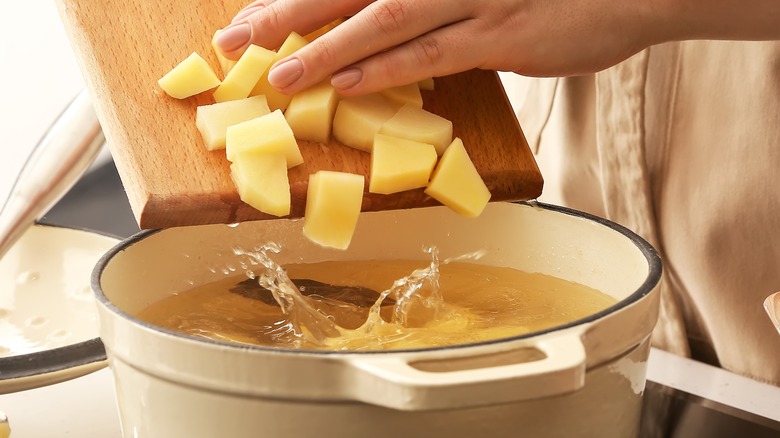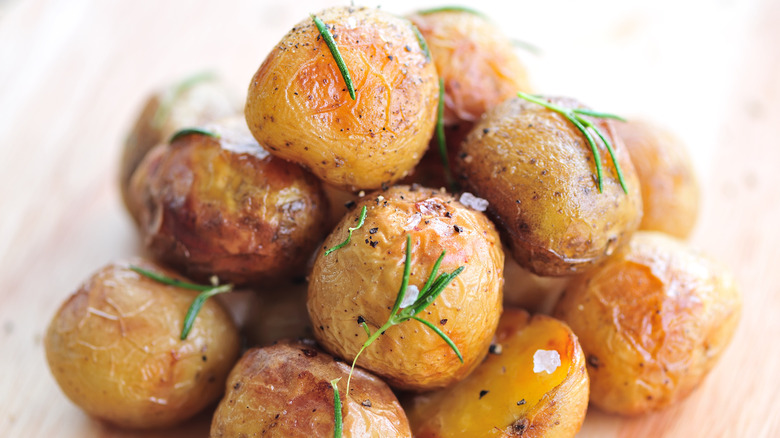Why You Should Refrain From Cutting Potatoes Into Small Chunks
Americans have a deep-rooted love for potatoes. The reason for this affection isn't hard to fathom — potatoes are not just delicious but also incredibly adaptable, fitting into different cuisines and cooking methods with ease, from humble mashed potatoes to fancier au gratin. But when it comes to prepping, how we cut spuds can make a significant difference in the finished dish quality. One rule of thumb is to refrain from cutting them into small chunks.
The major concern about dicing or slicing these vegetables into small sizes is the increased potential for nutrient loss. Potatoes are rich in water-soluble vitamins, such as vitamins C and B6. Therefore, when cut into small pieces, the spuds expose a greater surface area to water through which these valuable nutrients leach out. This means a significant portion of the potato's nutritional value is lost, especially if the cooking water is discarded. Larger chunks minimize this surface area, thereby reducing the loss of these vital vitamins.
Roasting potatoes presents a different challenge. When cut into small chunks, the tubers tend to absorb more oil, again due to the higher ratio of surface area to volume. This not only increases the calorie content of the dish but can also result in an overly greasy, less pleasant eating experience. Larger chunks, by contrast, absorb less oil, ensuring a better balance of crispiness and tenderness.
More reasons to avoid small potato pieces
Besides the nutritional concerns, there are more reasons to avoid cutting potatoes into small chunks. One significant factor is the way small pieces behave when prepared in advance. It's common practice to store cut potatoes in water to prevent them from turning brown. However, this is where size plays a crucial role. Small chunks of potatoes tend to absorb a lot of water when soaked (particularly if kept in water for more than a day) and the excessive water uptake not only impacts the texture, making the potatoes mushy when cooked, but also dilutes their natural, earthy flavor. Larger potato chunks, with their relatively smaller surface area to volume ratio, absorb less water, maintaining their structural integrity and flavor.
However, apart from cutting potatoes into larger chunks, there are other ways to enhance their cooking quality. One effective approach is not to cut them at all. Whole potatoes, especially smaller varieties, can be cooked as they are to maintain a robust flavor profile. Another technique is to keep the skin on. Potato skins are not only nutritious, adding fiber and other nutrients to the dish, but they also help retain the potato's natural flavors and moisture. The skin also acts as a barrier, reducing nutrient loss during boiling. Furthermore, skins add a pleasant textural contrast, especially in roasted or grilled preparations.

